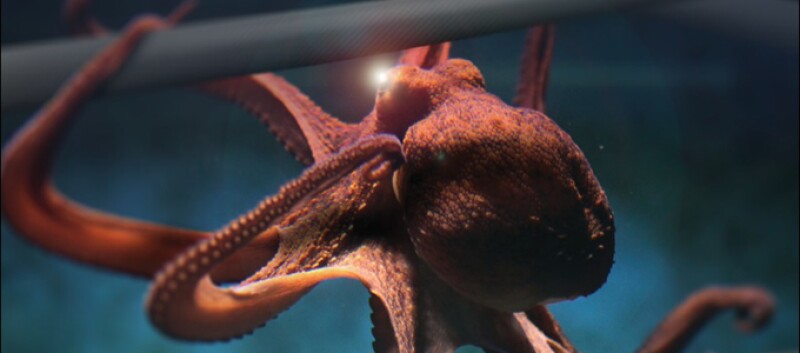
When the South East Asia–Middle East–Western Europe 5 (SEA-ME-WE 5) and Asia-Africa-Europe 1 (AAE-1) cable systems enter service later this year, both probably around November, connectivity between Asia, the Middle East, Africa and Europe will get a significant multi-terabit boost.
Though by no means the first cables to ply this basic route, these two unrelated launches represent a break with the past in several important respects. With their low latency and high transmission speeds, it is fair to call them the first new east to west cable systems tooled up specifically to take account of the era of mission critical cloud applications and the intercontinental streaming of industrial quantities of on-demand high definition video.
For the consortium members behind these projects, many of which will be bringing modern levels of capacity to their economies for the first time, the launches are not simply about performance. Mike Hollands is director of marketing and business development, connectivity segment, with data centre operator Interxion, which is bidding for the right to handle the traffic of both cables in its Marseilles centre, facilitating the journey onwards into Europe’s commercial hubs.
“These cables both have a different approach to that which previous systems have tended to follow,” he explains. “Other cables have tended to run from cable landing station to cable landing station, then from those stations to rely on the local incumbent to backhaul traffic to whatever is the nearest point for interconnection with other networks.”
The backers of both SEA-ME-WE 5 and AAE-1, he says, both reviewed this model and decided that it was an unhealthy way to go: “Their aim instead is to terminate each landing in a data centre, not a conventional landing station, where fluid interconnection with other networks already exists. Our facility in Marseilles has over 80 networks running into it, so anyone using it could enjoy competitively priced backhaul into big cities like Frankfurt, Paris, London and Amsterdam. This new model will make a big difference to the places around the world where these cables go, I’m sure about that.”
Digital super highways
Another notable characteristic of both consortiums is the involvement of carriers from several developing economies not generally associated with free and easy access to the digital superhighway. Their presence is recognition that fast broadband access is now a necessity for sustainable growth and development, not only in the developed economies of the west but the smaller emerging ones of Africa and Asia too.
These new networks will be a massively powerful enabler for millions of consumers and enterprises which to date have struggled with limited amounts of high priced bandwidth delivered over elderly infrastructure. Quite a number of these consortium members are also non-incumbent players with disruptive, game changing intent.
In Pakistan, for example, the landing of SEA-ME-WE 5 will be administered by Trans World Associates (TWA), part owned by Orascom of Egypt. It will be the company’s second international submarine cable landing in the country, since it already operates and owns TW1 which links Pakistan with the UAE and Oman. SEA-ME-WE 5 however will multiply capacity into the country several times over. TWA says its aim is to deliver hitherto unknown levels of redundancy and resilience to the country, in direct competition with incumbent forces. Its plan falls into line with the Pakistani government’s stated aim of fomenting a world class ICT sector. Bangladesh has been even less well served with reliable capacity than neighbouring Pakistan, but will now be landing SEA-ME-WE 5 to augment what it is getting from the aging SEA-ME-WE 4 system. That is currently the country’s only other window on the digital world, and access to it is controlled and rationed by a state-owned company.

In addition to handling SEA-ME-WE 5’s landing, Bangladesh Submarine Cable Company will also oversee terrestrial back up running into India to add further resilience. India itself, hardly a country untouched by cable capacity, will also see a step change: “One of the members of AAE-1 is Reliance Jio, a start up company in India that is licensed to provide 4G across the country,” says Hollands. “It is also operating the NOC for AAE-1 out of Mumbai. With its own PoP in Marseilles and direct connectivity there, it is undoubtedly going to deliver a real boost to the Indian economy. Other consortium members will also be using their French PoPs to connect directly with players like Interoute, Colt, BT and Telecom Italia.”
Another beneficiary will be Myanmar, once largely isolated from global connectivity but soon to be a landing for both cables. Myanmar Post and Telecommunications says that the days of flaky, slow and undependable internet connections, reliant on the antediluvian SEA ME WE 3, will soon be over for consumers and enterprises.
Adding diversity
European businesses needing to reach neighbouring Malaysia will soon no longer have to route so much traffic via North America. Resiliency and density are the stated goals of Telecom Malaysia with its SEA-ME-WE 5 investment, in particular the avoidance of dependence on cables in areas vulnerable to earthquake and tsunami. Competitive carrier Time Dotcom Berhad is hoping for a similar alchemy with its AAE-1 landing, which will soon join a global network spanning Japan, Europe, the US and the Middle East. Time will augment this further with the Asia-Pacific Gateway (APG), set to link Malaysia to Korea and Japan.
Further to the south, Indonesian carrier Telin will be supervising the landing of SEA- ME-WE 5, the first major new westward-facing system to touch the country in some time. Like other economies in South East Asia, Indonesia is now hungry for direct connectivity into the heart of Europe. The SEA-ME-WE 5 landing will complement Telin’s other subsea investments, such as with Asia America Gateway (AAG), South East Asia Japan Cable System (SJC) and Batam Singapore Cable System (BSCS).
Between them all, these connections create an exciting mesh between the US, Asia and Europe, further lighting up a capacity-needy and diversity-starved region. Africa is also a major beneficiary, set to gain substantially from Orange’s involvement and that carrier’s rich tapestry of existing subsea connectivity. Orange itself gains from better links looking east.
With Asia to Africa commerce booming, it will be timely for faster direct low latency links between the continents, running up as far as Vietnam and other Indochinese economies. There are other European winners too with the AAE-1 cable going to Greece, the first time a Europe to Asia cable has landed in there since SEA-ME-WE 3. Neighbouring Turkey, on the fringes of both Europe and the Middle East, gets SEA-ME-WE 5, uniquely for a major east to west cable.
Increasing digital trade
The Persian Gulf, as so often before the conduit for Asia to Europe digital trade, is also going to prosper from these launches, in a subtly different way than from previous high capacity systems.
“If you look at all the activity that has happened in that Red Sea corridor in the past – cables like EIG and IMEWE and MENA – they are all very important, but they did not address anything further east than India,” points out Alan Mauldin, research director with analyst firm TeleGeography. “What these two new cables are both trying to do is meet the demand for more capacity between South East Asia and Europe. They’ll also connect with the Middle East and the subcontinent too, but they’re about more delivering options, and of course more route diversity.”
Mauldin observes that both projects differ too in terms of the weight of gravity of membership of the consortiums: “There’s a lot of Asian carriers in there, driving the projects and getting them funded, whereas previously European carriers might have borne the heaviest load,” he says. He points to other interesting divergences from convention: “AAE-1 does not land in Singapore directly like most such cables do in the region. It will land in Malaysia and link to Singapore terrestrially going down. This avoids the Straits of Malacca, a heavy shipping area and a source of many a cable fault. It also goes all the way up to Hong Kong, serving Vietnam, Cambodia and Thailand on the way.”
Mauldin believes that while these cables present many innovative aspects to the capacity market, and will certainly be adding useful added capacity, there is often a more basic rationale for their existence: “If you are one of these smaller economies and you know a cable is passing near you, you probably want to get involved, not knowing when another chance might come up,” he says. “If you’re Yemen, this is a great chance to add to the capacity you already have, because having one, two or even three cables is not enough these days. You need a lot of options, especially in parts of the world, like the Middle East, where a lot of cable outages occur.”
Carriers, he says, often join cable projects to sidestep dependence on competitors: “Just because half a dozen cables land in your country doesn’t mean that all carriers in that country have their own capacity on every cable,” he points out. “It’s often about you, as an owner, having direct access to a cable, not beholden to a third party in your own country.”
Whatever the motivation of their investors, both of these modern high capacity projects will play a key role in the future of international connectivity in the countries where they land. They both promise a long term impact at a critical time in the world’s connectivity market.




